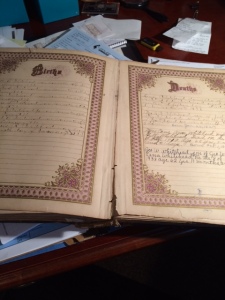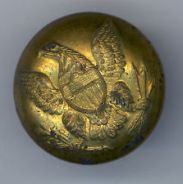William J. Sublett was my 3rd great-grandfather. He was the third child born to Matthew and Frances (Key) Sublett about 1808 in Campbell County, Virginia. Notice I do not have an exact date of birth. This date is extrapolated from US Census records. I started this post a while ago, then I realized that I had merged different ancestors together. This is a common error in ancestry especially when the names are similar and born in similar places.
It appears William J. Sublett was married three times. His first wife was Frances Jennings on 1 June 1834. We do not know much about her.
William and Frances had a son, Matthew D. Sublett, in 1835. Maybe Frances dies in childbirth, because William then marries Sarah Hamersley 25 July 1836. We know these facts because these marriage records have been published. Sarah and William have two sons and a daughter. James W. born 1838, George Bland born 1847 and Melinda F. born 1849.
Matthew and George both go to fight in the Civil War.
Matthew was listed as a substitute on the Civil War Muster Rolls with the 18th Regiment, Virginia Infantry, Company G. Matthew tragically dies at the Second Battle of Manassas (Bull Run) on 30 Aug 1862. This means he went in the place of more wealthy draftees. I will detail his entire story at a later date. This is very interesting because on the Whitehead side of my family, I have a relative that was not in the Revolutionary war because he was the wealthy one.
George Bland also served in the Civil War. You can read about him here: https://exploringbackwards.wordpress.com/2013/07/12/george-bland-sublett/
Returning to William J. Sublett, he lived a long life.
The 1850 Census is the first US Census with names. This makes things much easier for the genealogist! William and Sarah are living in the Northern District of Dinwiddie County with their children Matthew, James, George and Melinda. William is listed as an overseer. I presume this means he worked on a plantation as a supervisor over the slave labor. This is hard to come to grips even 10 years after starting my genealogy journey. I understand it was a profession of the era in which he was born. But, I still get a little uneasy writing about it. But, I am also a believer that we learn from our mistakes. My father taught me that.
By the 1860 Census, William and his family moved to Campbell County. The Census indicates he lived in the Eastern District of Campbell County. His real estate is listed as $970, and his personal estate is listed as $435. He is listed as a farmer. He lived in the Eastern District of Campbell County, Virginia with his wife, Sarah, his son George B, his daughter Melinda F. Also residing in the home is a black male, age 60. He is not listed as a slave. His name is listed as Lewis Cobb. This is important due to the time in which it occurred. It looks like William had earned enough money to make it on his own.
In the 1870 Census, William is living with his wife Sarah. Also living with them is George Bland (my second great-grandfather), back from the war with his wife, Timotheus Jane Bailey and their two young daughters, Ida and Emma. The most interesting notation is a young black boy, aged 10 years old living with the family and listed as a nurse on the census. What does that even mean? The family is listed as living in the Eastern Division of Campbell County, Virginia. The listed real estate value is $350 and the Personal Estate is $200. The value of his real estate had diminished by $600, over 71%. I believe this is a result of the ravages the Civil War had on the economy.
His second wife, Sarah, dies 11 July 1878. Two months later William marries again.
At 69 years old, he marries for the third time to Mary Elizabeth Moore on 15 September 1878. His wife was 45 years his junior. According to the 1880 US Census. William, his wife Elizabeth are living in Falling River, Campbell County. Elizabeth’s younger brother Thomas, 18 was also living there. Also living in the home was a cook and the cook’s two young sons. This census does not ask any financial information.
The 1880 Census is the last place I find William Sublett. He would have been 72, so it is likely he died before the 1890 Census. I have not found his grave at this point. But I will keep looking. It is interesting the life story you can build just by looking at census records and putting them in the context of history.
I will continue to do work on my ancestors.
Until later I will be exploring backwards!
















